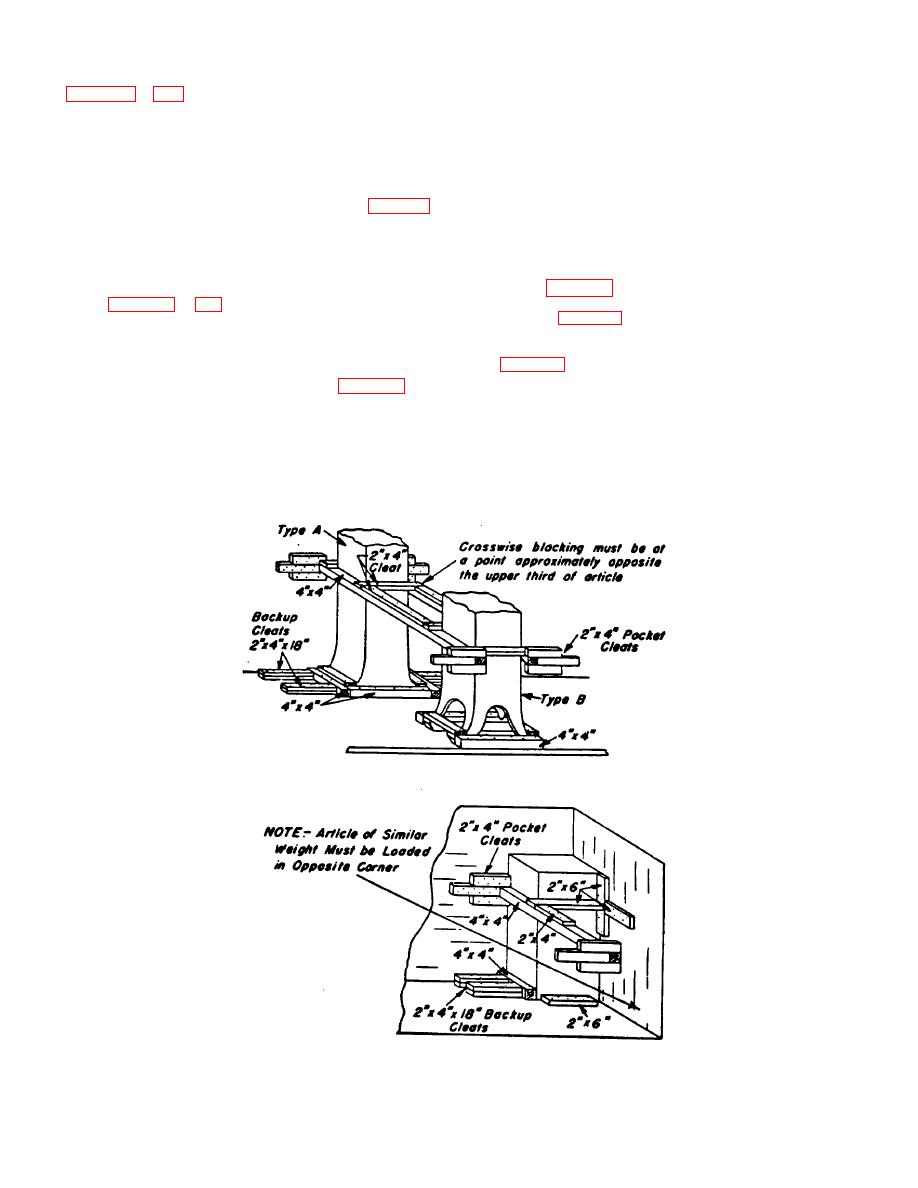
straps or round wires are used in lieu of wood bracing. Two
in figures 32 and 33 should be used in cars with steel-jacketed
distinct methods are used; namely, the "floating load" and the
doorposts.
"anchored load." The number, size, and strength of steel
straps required under these methods of loading vary
(3) The spacing of the face members of the
depending upon the weight and dimensions of the commodity
doorway protection depends upon the size of the containers or
loaded and are identified in the various specific commodity
of the individual articles. These boards must be spaced on
AAR pamphlets. However; in no case should steel straps
the uprights so that each member, except the top member, is
having a joint strength of less than 2,000 pounds be used.
in contact with two layers of containers, as shown in figure 34.
(4) Doorway protection in the form of steel straps
(2) The anchored load provides rigid bracing of
can be used. When perforated steel straps are used, they
the lading by use of metal ties secured to the car walls with
should not be less than /4 inch x 0.020 inch, and when solid
anchor plates. Anchor plates must be properly threaded, as
steel straps are used, they should not be less than 3/4 inch x
shown in figure 37, before being fastened to the car walls.
0.028 inch. Steel straps should be tensioned and sealed as
They must be securely nailed to the car post in the car wall,
shown in figures 35 and 36.
as shown in figure 38, and must be not less than 3 feet back
(5) One steel strap should be placed opposite
from the face of the load. When round metal ties are used,
each layer of cargo and sheets of fiberboard, or several
they must be secured to a car post in the car wall, as shown
thicknesses of heavy paper must be placed over the anchor
in figure 39. If the lading comes in contact with the anchor
plates. Large sheets of fiberboard should be placed between
plates, the anchor plates must be covered with fiberboard or
the lading and the metal bands, as shown in figure 35. For
several thicknesses of heavy paper. When two or more metal
very heavy freight, it is recommended that 1V4 inch x 0.035-
ties are used, they should be tensioned and sealed
inch metal strap be used.
simultaneously, so as to place the load in a uniform position.
f. Bracing by Means of Steel Straps.
(1) With the metal tie method of bracing, metal
ties in the form of high tension flat steel
Figure 11. Bracing top-heavy articles-machinery.
Figure 12. Bracing top-heavy articles containers.
10

